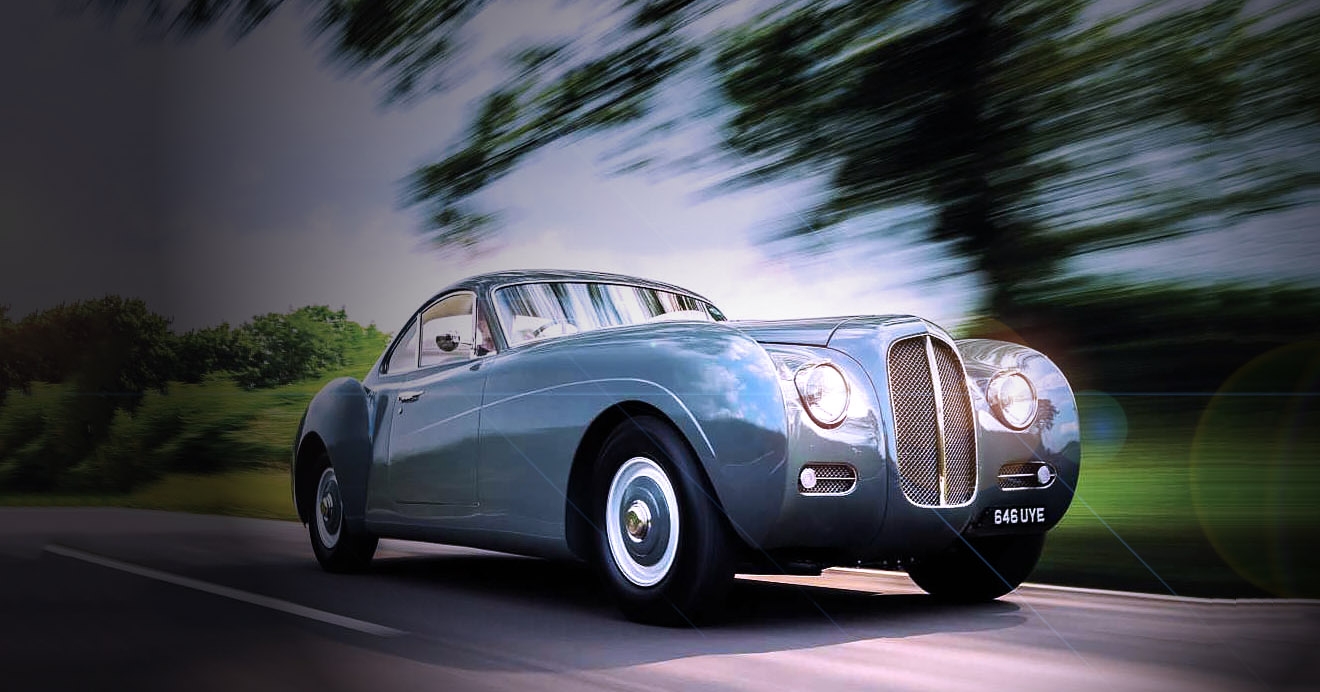
More exclusive than a Continental – Bentley R-Type Special. The very special La Sarthe fastback. Based on a Bentley R-Type chassis, the La Sarthe evokes the great coachbuilt Bentleys of the past. Mark Dixon put it to the test. Photography Tim Andrew.
What’s your gut reaction to the looks of this car? It’s a provocative question but, when the La Sarthe first broke cover, opinions were divided. Some saw it as a fine continuation of the coachbuilding tradition. Others saw it as a pastiche of great Bentleys past – for, while the La Sarthe is not a copy of any particular model, it certainly plays with some familiar shapes and styling cues. And it is based on a standard Bentley R-Type chassis.
Whichever camp you fall into, you have to admire the sheer dedication behind the project. The La Sarthe has been made metal not by some long-established carrosserie in Paris or Milan, but by a small restoration company in rural Somerset. And now it’s time to drive it.
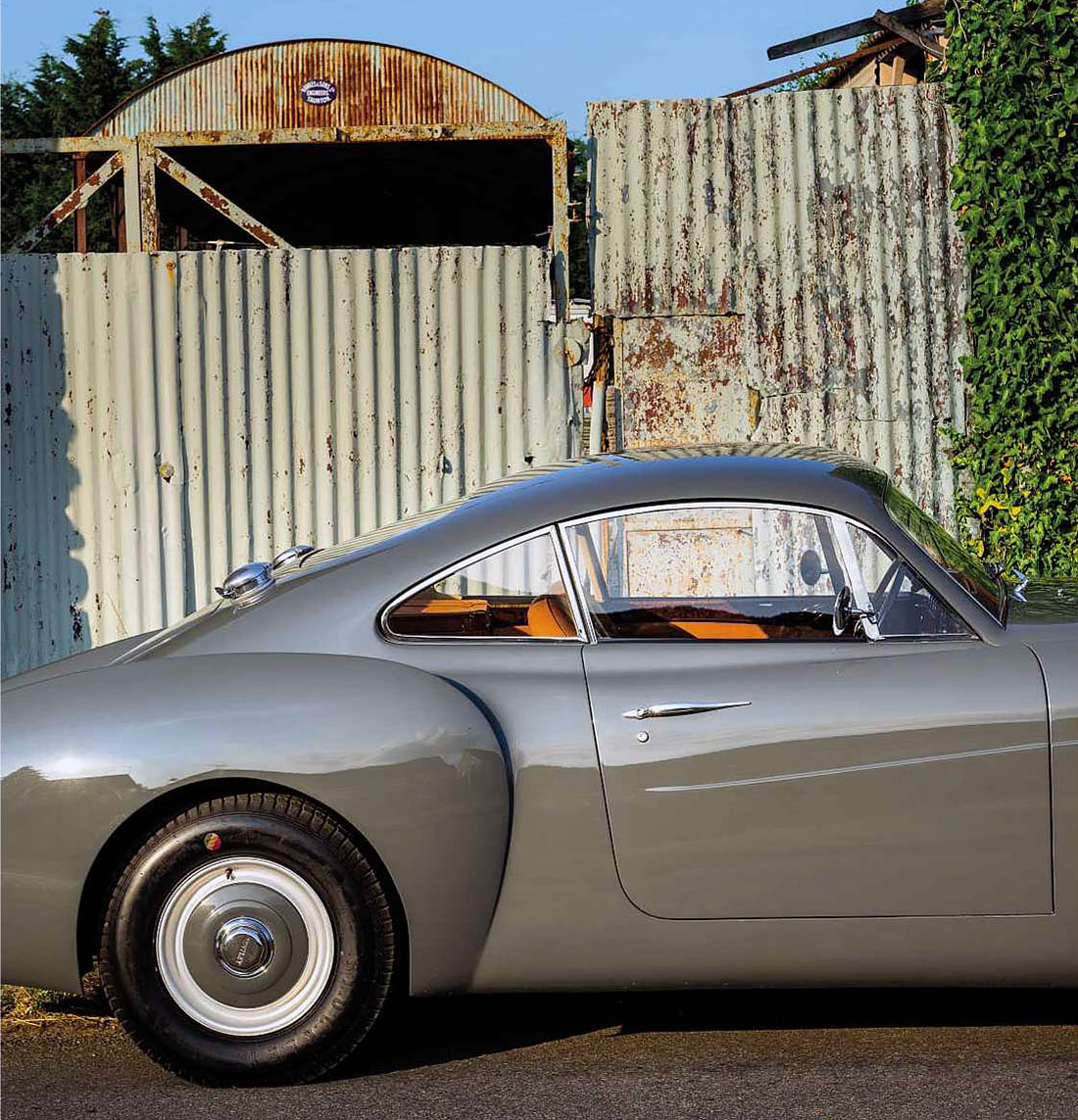
First, though, let’s deal with The Looks. In photos, the La Sarthe can appear slightly cartoonish – like something that Herge might have created for a Tin-Tin comic. It’s a concept we don’t often associate with Bentleys, although there are precendents – remember the MkVI that was bodied by Franay for the 1947 Paris Salon? Google it, if not. You’ll be surprised.
In the metal, the La Sarthe presents as a clever melding of many Bentley design cues and historical references. From the B-pillar back, it’s strongly evocative of a Continental, the model with which most vaguely clued-up onlookers will associate (or confuse) it – and the rear window is genuine R-Type Continental. The front end, with its gently convex radiator aperture and lack of the familiar heavy chromed Bentley grille, seems to recall the 1938 ‘Embiricos’ 4M-litre, with added hints of the Pininfarina-styled 1948 Bentley Cresta show car and the 1949/50 Corniche II styling sketches that evolved into the immortal Continental.
In short, it’s impossible to pin down, and that’s exactly how Robert Perry, proprietor of Bensport and the man behind the La Sarthe, intended it. As the Bensport website unequivocally proclaims about the La Sarthe: ‘Not a replica. Not a re-creation. Not a lookalike.’
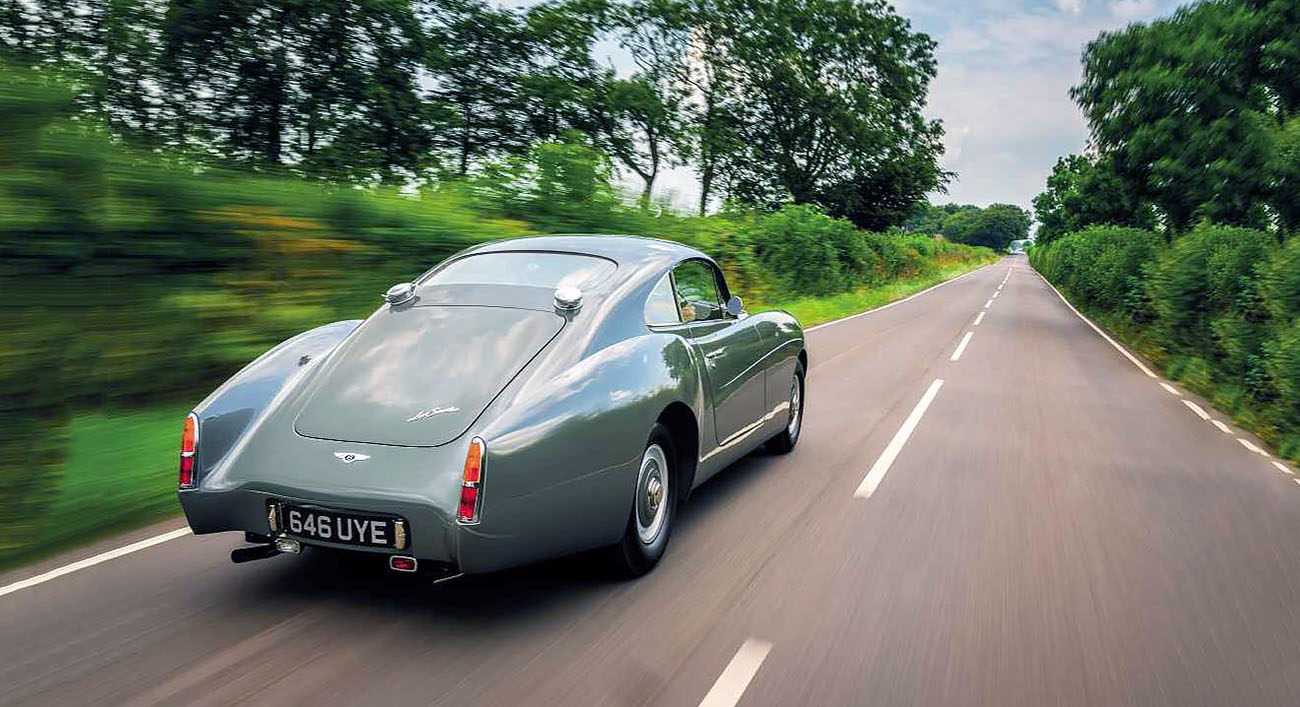
Robert expounds further: ‘The whole rationale was to create the car that Bentley Motors could have built and raced at Le Mans in 1950. Considering how well the Embiricos car did in 1949, it probably would have been very successful. The R-Type chassis is so superior to a pre-war car’s. We wanted a name that conjured up Le Mans, along the lines of Mulsanne or Arnage, and realised that no-one had adopted La Sarthe. It was an obvious choice.’
Robert is particularly keen to emphasise that the La Sarthe is not a cut-price version of a Continental. ‘It may well be that the buyer of a La Sarthe would already have a Continental but – now that a really nice one is worth around a million pounds – they might be disinclined to use it much. The La Sarthe is a car to be used. It’s not something to be bought and salted away as an investment. If anything, being lighter than a Continental, it will perform and handle slightly better, so it is very much a driver’s car.’
At the moment, there is only one La Sarthe. It’s a prototype and it’s something of a work-in-progress, with some features that have yet to be fully resolved. A good example is the door windows. You’d never guess, but they’re currently made of Lexan, due to a problem with the quality of the glasses supplied just before a major show last year. Flat safety glass is, apparently, much more difficult to obtain than the curved stuff used in windscreens.

Left and right. The La Sarthe’s R-Type 4.6-litre engine has been left largely stock, but its interior is all-new and features beautifully veneered wood, bespoke instruments and uniquely trimmed doorcards.
Nevertheless, there isn’t much sign of compromise. This car has a handmade body built by an outside contractor, and you sense that a degree of blood, sweat and tears has gone into refining it, but you’d never guess – it looks superb in its eggshell grey paint. Production cars will be made and assembled by a specialist company in Coventry: ‘We would like to present a completed car in bare aluminium, to show how good the body really is,’ adds Robert.
The lines of the La Sarthe are also down to Robert. He was initially commissioned to tweak a customer’s own design for a Chapron-style body to fit a Bentley MkVI chassis; the customer retained the rights to that design, but the experience inspired Bob to come up with something totally original ‘…and in about four minutes I produced a sketch that hasn’t changed significantly through to the finished vehicle. The fundamentals were all there.
‘From that sketch, we produced plan views and a series of cross-sections to get the basic shape of the body, and they were then put into a CAD programme. Tony Hunter, a former Jaguar Land Rover designer, refined the shapes on computer so that full-size bucks could be produced for the prototype bodyshell.’
Right. La Sarthe in its element on a fast and empty cross-country road. Performance is at least as brisk as a Continental’s and the looks are equally eye-catching.
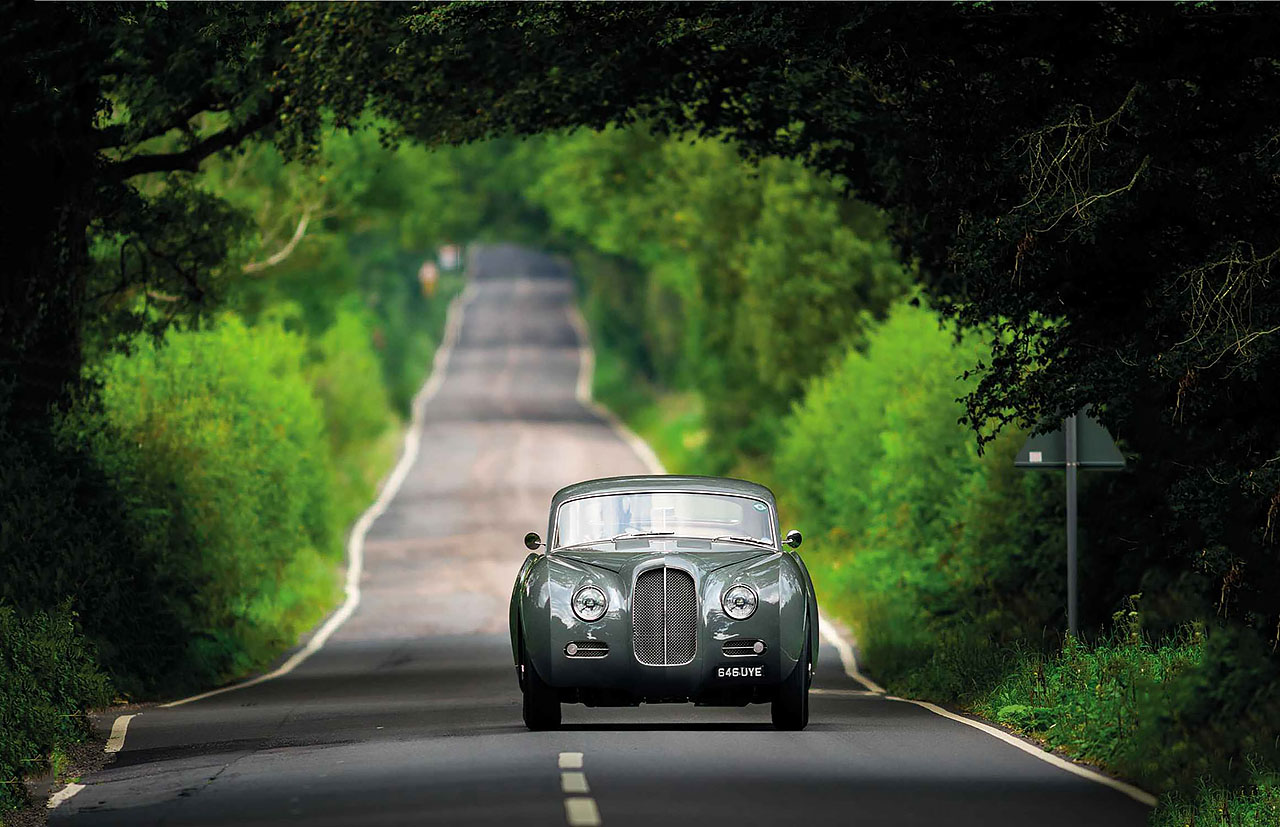
The La Sarthe is a beautifully relaxed Grand Tourer, with a decent turn of speed
In comparison, sorting the underpinnings for the La Sarthe was straightforward. The Bentley MkVI and its successor, the R-Type, in essence had the same chassis, although the latter’s was altered to suit the R-Type’s revised rear-end styling. It’s a sad but undeniable fact that Bentley chassis from this era invariably survive much better than the steel bodies usually fitted to MkVIs and R-Types, and this example was no exception. Originally a Standard Steel-bodied R-type from the Isle of Man, it had rotten coachwork but a chassis that was still as sound as the day it was built.
‘If we can obtain R-Type chassis we prefer to use them, because Crewe made improvements over the years, strengthening certain areas and switching from riveting to welding,’ adds Bob. ‘There’s nothing wrong with a MkVI chassis and, of course, the early Continentals were built on those, so it’s perfectly possible to build a La Sarthe on MkVI running gear.’
The biggest advantage of starting with a ‘matching numbers’ donor vehicle is that it can retain its original registration, since only the bodywork – which is cosmetic, when all’s said and done – has been changed. In these increasingly bureaucratic times, that’s a welcome bonus.
LET’S GO FOR THAT DRIVE
First you must negotiate your way over the pairing of the right-hand gearchange and handbrake lever, and under the big, gorgeous three- spoke Bentley wheel. Newbie owners of a La Sarthe would be well-advised to spend some time practising this manoeuvre, if they’re not to end up looking considerably less elegant than their car.
Once inside, you’ll find yourself perched on rather hard seats – they are apparently filled with memory foam, and will adapt to the shape of the occupants’ backsides over time – facing a beautifully veneered dashboard that’s punctuated by bespoke dials and gauges and a long row of toggle switches. The woodwork was carried out by veneering specialist Silvercrest, and I raise my metaphorical hat to them, because they’ve done an outstanding job to a very tight deadline.
The quality of the interior as a whole is superb. Most of it is bespoke, although you can have fun guessing at the origins of certain components – the armrests are from the donor R-Type, while interior handles are Jaguar Series 1 E-type (as are the locks). One omission, yet to be rectified, is a finger-pull or handle to tug each hefty door closed, but customers can request pretty much any modification they like. Air conditioning is standard but, if Sir would like opening front quarterlights to waft away the smoke from his cigar, they can be engineered – at a price.
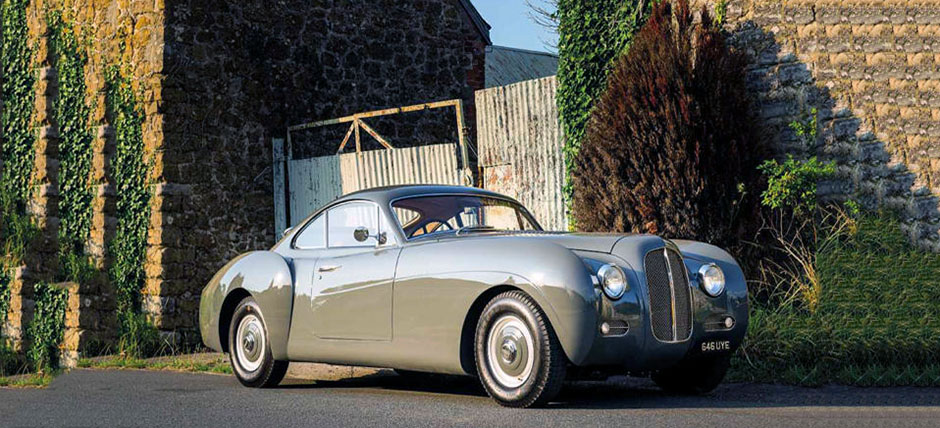
Above. With its largely unadorned ‘jellymould’ shape and balloon tyres, the La Sarthe is reminiscent of a 1950s Dinky Toy made real.
The 4.6-litre straight-six woofles into life in an aristocratic way that is unmistakably Bentley. Feel down by your right leg for the slim gearlever and ease it into first, and then pull away on a handful of revs and a trickle of torque: the underpinnings of this car are 60 years old, and the driveline appreciates a gentle touch.
Bensport’s premises are located within a maze of bucolic Somerset lanes that offer test drivers a kind of rural pave test, and reveal a certain low-speed jiggliness to the ride. But I’m going to cut to the chase right away: the La Sarthe is being served dreadfully by its tyres, which are a modern manufacture of crossply. With their deep-sided ‘balloon’ profile, they look fantastic – and they may well work beautifully on a race circuit – but they are ruining the La Sarthe’s on-road dynamics.
The directional stability on these tyres is nothing short of shocking, and results in the worst case of tramlining I’ve ever experienced – so bad that the car was violently tugged from left to right on a narrow country road, to a frightening degree. Even on the relatively smooth and fast A303, the uncertainty makes a fast overtake more stressful than it need be – and fast overtakes are what you really want to be doing in a La Sarthe.
(On my return, I make a call to Bentley specialist Frank Dale & Stepsons, where Ivor Gordon – one of the stepsons – has owned an R-Type Continental for several decades. ‘Avon radials are the way to go,’ I’m told. ‘We swear by them and have run them on the Continental for years.’)
With fresh rubber, the La Sarthe would be transformed – it is, after all, an R-Type under the skin. The engine has been left untouched, other than having a fast-road cam, six-branch exhaust manifold and free-flow piping, while the chassis is basically stock, apart from some stiffening of front springs and anti-roll bar, decambering of the rears, and the addition of a rear anti-roll bar.
Once you’re moving faster than walking pace, the steering lightens up noticeably, and any residual imprecision when cornering is, I’m convinced, down to the tyres rather than the mechanical elements, although the steering wheel’s enormous diameter – it’s one of the largest ever fitted to a British car – means the driver’s inputs have to be commensurately larger, too.
Bensport technician Andy Perry has covered literally thousands of miles in the La Sarthe, both in the UK and on the Continent, so there’s no doubt it’s perfectly drivable as is. Tyres aside, it is a beautifully relaxed Grand Tourer, with a decent turn of speed and respectable acceleration; certainly what Rolls-Royce would once have described as ‘adequate’. There’s very little wind noise, even when travelling at a serious lick. Only a peculiar ‘electric whine’ from – guess what – those wretched tyres, which rises in pitch as speed increases, spoils the serenity. Listening afterwards to a recording on my iPhone, it sounds as though I’m travelling on the London Underground.
The solution is to drive faster, whereupon the tyre noise becomes so high-pitched that it’s virtually inaudible. Whooshing past slower traffic is immensely satisfying – how rarely do you see a properly old car being driven properly fast? – and you can practically feel the curiosity of occupants in more mundane vehicles: what is that grey wraith that has just swept by us?
And that, for La Sarthe owners, will be a major part of the car’s appeal: its exclusivity. Bensport promises it will build no more than ten La Sarthes before moving on to other projects. That’s something with which a ‘real’ Continental – of which there were 208 examples built – can’t compete. Looked at way, the £350,000 asking price for a La Sarthe seems perfectly acceptable.
THANKS TO Bensport, www. bensportltd. co. uk, +44 (0)1460 55754, which also specialises in Jaguar and Bentley restoration.
Car 2014 La Sarthe
ENGINE 4566cc straight-six, overhead inlet/side exhaust valves, twin SU H6 carburettors
POWER 145bhp @ 3500rpm
TORQUE 246lb ft @ 900rpm
TRANSMISSION Four-speed manual, rear-wheel drive
STEERING Cam and roller
SUSPENSION
Front: double wishbones, coil springs, lever-arm dampers, anti-roll bar.
Rear: live axle, leaf springs, lever-arm dampers, anti-roll bar.
BRAKES Servo-assisted drums
WEIGHT 1600kg
PERFORMANCE
Top speed 115 mph (est)
0-60mph 12 sec (est)





